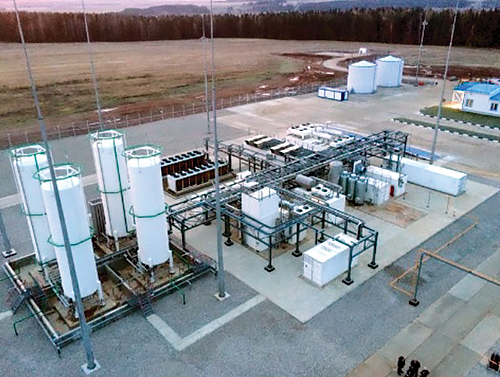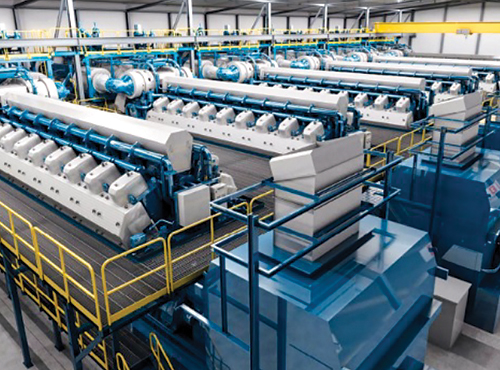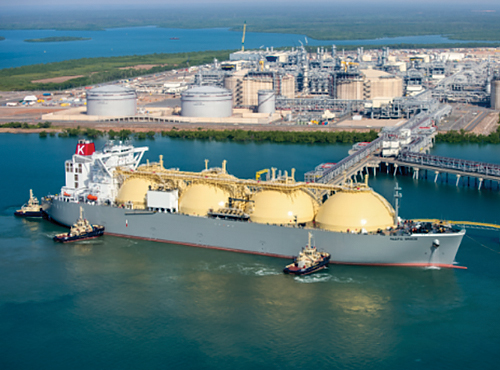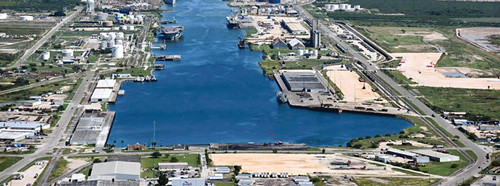Gas Processing News
Europe’s LNG imports expected to soar in 2020
After a record influx of LNG into Europe in 2019, the region is on track to raise imports to nearly 100 metric MMtpy. With LNG demand falling in Japan and South Korea and rising more slowly than previously expected in China last year, Europe has become the major destination for cargoes unwanted in Asia.
Analysts expect that from a record of around 85 metric MMt of LNG delivered to Europe last year, the region will increase its purchases by more than 10 metric MMt in 2020. Uncommitted cargoes will largely end up in northwest Europe, a region that plays a key balancing role in periods of oversupply.
The excess will average 78 cargoes this year, which may increase Europe’s imports to 96 metric MMt. For comparison, around 76 metric MMt were delivered in 2019 to Japan, the world’s largest LNG importing country.
This year’s forecast rise may seem modest compared to 2019’s spike of around 30 metric MMt, but it is significant given the present oversupply in the European gas market. Less room is available for storage this summer, and significant coal-to-gas switching has already taken place.
European LNG imports are estimated to grow to around 100 metric MMt this year, provided there are no supply cuts. The average for the day-ahead price in the Netherlands (the most liquid market in Europe) in December 2019 and January 2020 was €12.10/MWh ($3.95/MMBtu), the lowest for the two-month period since January 2004. The main result of the increase would be a further decline in gas prices in Europe.
The shift is taking place as new LNG export projects in the U.S. and Russia are directing most of their supplies to Europe. For example, the U.S. was the largest LNG exporter to Europe in the first month of 2020, followed by Russia and then Qatar.
Russia’s Gazprom, the largest pipeline exporter into Europe, cut deliveries by 1.3% to countries outside the former Soviet Union in 2019 from the record high reached in 2018. It delivered 199.2 Bm3, equivalent to 146 metric MMt of LNG.
Bilfinger and Cryotec partner in LNG sector
 |
Industrial services provider Bilfinger continues to expand its activities in the field of small-scale liquid natural gas (SSLNG). In collaboration with Cryotec Anlagenbau GmbH, Bilfinger subsidiary Bilfinger EMS has developed a concept for processing small gas volumes into LNG.
The concept includes treating gas derived from various sources, supplying the corresponding liquefaction technology, and providing LNG for further use in Europe. As part of the partnership, Bilfinger EMS will provide the required services throughout the entire lifecycle from one entity—from the LNG facilities’ planning to their installation.
LNG is often in demand at locations that are far from a major import terminal. Accordingly, facilities that are able to produce the fuel locally, in smaller quantities, and deliver it where needed will play an increasingly important role in the future.
Small, modular liquefaction facilities enable a reliable and uninterrupted supply chain, from the gas source straight to the end user. Cryotec specializes in cryogenic air-fractionation and liquefaction facilities, for which it provides in-house engineering and fabrication services.
The use of LNG as fuel is gaining ground in many industrial and commercial sectors, given that it emits fewer pollutants than diesel or heavy crude oil. For example, replacing diesel with LNG in the transport sector can achieve a 25% reduction in the greenhouse gases emitted by heavy trucks and tractor trailers.
Wärtsilä converts Brazilian power plant to gas power
 |
Finnish technology group Wärtsilä will convert a Brazilian power plant to 100% natural gas operation, while at the same time increasing output from 85 MW to 92 MW. This will reduce the plant’s operational costs and lessen its environmental impact.
The contract with Rio Amazonas Energia (RAESA) is for the Cristiano Rocha power plant in Manaus, Brazil, and was signed in November 2019. In addition to the conversion, the two companies have signed a long-term service agreement with power plant performance guarantees.
The project will involve converting the existing five Wärtsilä 46GD dual-fuel combustion engines to five Wärtsilä 50SG gas-fueled engines and the required common system upgrades. The improved plant performance will raise its overall competitiveness, especially with regard to future energy auctions, and enhance RAESA’s possibilities for extending its existing power purchase agreement (PPA), which is set to expire in 2025. Under the PPA, the company is contracted to supply energy to the national grid.
The project is planned to increase the reliability of the plant’s operation and reduce operating costs, while the service agreement will optimize equipment maintenance and planning, guarantee the capacity and enable predictability of maintenance costs.
At present, the plant rents additional generators to ensure adequate output. This cost will be eliminated when the conversion is completed. Furthermore, the use of natural gas fuel will reduce the plant’s environmental footprint by approximately 10%, representing around 35,000 metric tpy of CO2 equivalent, which equals the pollution from 7,600 cars.
The conversion is scheduled to be fully completed in the first half of 2021. Wärtsilä has already successfully completed a number of gas conversion projects involving more than 100 Wärtsilä gas engines and totaling more than 1.2 GW.
U.S. natural gas consumption sets new record in 2019
U.S. natural gas consumption increased by 3% in 2019, reaching a record of 85 Bft3d, according to the U.S. Energy Information Administration (EIA). New natural gas-fired electric capacity and lower natural gas prices led the increase in domestic natural gas consumption.
U.S. gas consumption grew in the electric power sector by 2 Bft3d, or 7%, but remained relatively flat in the commercial, residential and industrial sectors. Exports by pipeline to Mexico and as LNG grew by 0.5 Bft3d and 2 Bft3d, respectively. In 2019, the electric power sector consumed 31 Bft3d, or 36%, of total domestic U.S. natural gas consumption.
Cameron LNG Train 2 begins commercial operations
Sempra LNG, a subsidiary of Sempra Energy, announced that Cameron LNG’s second train of the liquefaction export infrastructure project in Hackberry, Louisiana has begun commercial operations under Cameron LNG’s tolling agreements.
Train 3 remains on track to start initial LNG production in 2Q 2020 and to commence commercial operations in 3Q 2020. The facility’s first liquefaction train started commercial operations in August 2019.
Phase 1 of the Cameron LNG export project includes the first three liquefaction trains that will enable the export of approximately 12 metric MMtpy of LNG, or approximately 1.7 Bft3d.
Sempra Energy’s share of full-year, run-rate earnings from the Phase 1 project are anticipated to be $400 MM/yr–$450 MM/yr starting in 2021, when all three trains achieve commercial operations under Cameron LNG’s tolling agreements.
Cameron LNG is jointly owned by affiliates of Sempra LNG, Total, Mitsui & Co. Ltd. and Japan LNG Investment LLC, a company jointly owned by Mitsubishi Corp. and Nippon Yusen Kabushiki Kaisha. Sempra Energy indirectly owns 50.2% of Cameron LNG.
Sempra Energy is also developing four other LNG export projects in North America, including Cameron LNG Phase 2, which could include up to two additional liquefaction trains and up to two additional LNG storage tanks; Port Arthur LNG in Texas; and Energía Costa Azul LNG Phases 1 and 2 in Mexico.
Global LNG oversupply to persist through mid-2020
Oversupply in the global LNG market could continue until the middle of the year, but then ease as demand from southeast Asia and India picks up, according to an executive from Japanese oil and gas firm Inpex Corp.
LNG prices are at record lows due to lower demand from Asia stemming from a warmer-than-usual winter and a weakened economy from a trade war with the U.S. There are also concerns about the impact of the novel coronavirus on China’s industrial demand, which accounts for 60%–70% of total LNG consumption in China.
India’s sixth LNG import terminal comes online
In January, India commissioned its sixth LNG import terminal, Mundra LNG, with a nominal import capacity of 0.7 Bft3d. Mundra LNG is the third LNG import terminal located in India’s westernmost state, which has a well-developed pipeline network.
All LNG import terminals in India, except one, are located on the west coast along the Arabian Sea. The first two terminals in operation—Dahej (2.3 Bft3d) and Hazira (0.7 Bft3d)—were placed in service in 2004 and 2005, respectively. These two terminals are the most utilized LNG facilities in India, operating at nearly 100% capacity utilization.
In 2013, the Konkan terminal (0.3 Bft3d), located south of Mumbai, and Kochi LNG (0.7 Bft3d), located adjacent to the Kochi refinery in southern India, were placed in service. In 2019, India commissioned its first terminal on the southeast coast—Ennore LNG (0.7 Bft3d)—primarily to serve customers in the Chennai area.
In the next 3 yr, India’s LNG import capacity is expected to increase by one-third, with four terminals under construction expected to come online by 2023. Western India has a highly developed natural gas infrastructure, but the southern and eastern regions of the country lack pipelines to move natural gas from coastal LNG import terminals to inland demand centers. Future growth in India’s LNG imports will depend on the timely completion of connecting pipelines.
Australia is world’s largest LNG exporter, says EnergyQuest
 |
Australia has officially become the world’s largest exporter of LNG on a yearly basis. The country exported an estimated, record volume of 77.514 metric MMt of locally produced LNG in 2019. Australia edged out former LNG export titleholder Qatar, which is expected to produce 75 metric MMt in 2019.
The 2019 Australian LNG exports were more than twice those of the U.S., the world’s other fast-growing LNG producer. The U.S. Energy Information Administration (EIA) expects the U.S. to have exported 34.3 metric MMt in 2019.
The Australian volumes came from the three fully established LNG hubs at Karratha in Western Australia, Gladstone in central Queensland and Darwin in the Northern Territory. The latter is the home of both the Ichthys LNG (pictured) and Darwin LNG projects.
Total Australian 2019 LNG shipments were up by 11.4% from 2018, primarily due to growth in production from the Ichthys project, which is operated by Japan’s Inpex. Western Australian production was steady on 2018, and Queensland production was up by 8.2% to
22.4 metric MMt, with both the APLNG and QCLNG projects operating at close to full capacity.
The figures and new world title were confirmed in an analysis of ship tracking data by Australian independent energy consultancy EnergyQuest. While Qatar’s final production figures for 2019 were yet to be produced, Australia’s operational capacity of 88 metric MMt now substantially exceeds the 77 metric MMt of its Middle Eastern rival.
Australia previously achieved the No. 1 title in some individual months, but 2019 is the first time Australia has topped global LNG export performance on a sustained annual basis, according to EnergyQuest.
Australia’s 10 LNG projects have a combined capacity of 87.8 metric MMtpy. However, with only 88% of total nameplate capacity used
in 2019, opportunity remains going forward to lift the production milestone even higher. For example, the Shell-operated Prelude floating LNG project offshore Western Australia is expected to reach full capacity in 2020.
On a percentage basis, the Northern Territory was the star performer for 2019, lifting sold output by 153% to more than 10.5 metric MMt from 4.15 metric MMtpy the previous year.
Western Australia continued to dominate the country’s LNG output at 57% of the national total, with Queensland garnering 29% of those exports.
The largest contributing project to Australia’s LNG exports was the Woodside-operated North West Shelf project in Western Australia, followed by the two Chevron-operated Western Australia projects, Gorgon and Wheatstone.
The largest percentage growth was the Northern Territory’s Ichthys LNG project, producing 7.529 metric MMt in calendar 2019—up 900% in a year from its commissioning volume in 2018.
Western Australia alone is now the world’s second-largest LNG producer, with Queensland ranking a significant sixth. The new data underpins the emergence of the Northern Territory as the third force in Australian LNG, producing 14% of Australia’s 2019 LNG exports.
EnergyQuest analysts estimate total 2019 LNG export revenue at A$49 B, up from A$43.3 B in 2018 and A$9.4 B in 2010, at the start of the Australia LNG development boom.
Kazakh firm to build $860-MM Kashagan gas processing plant
Kazakh firm GPC Invest will build a $860-MM gas processing plant near the Central Asian nation’s biggest oilfield, Kashagan, the Kazakh government said. The cabinet has previously said it was discussing the project with a group of global energy companies developing Kashagan. The consortium includes Eni, Total, Shell, ExxonMobil, CNPC and Inpex.
However, Prime Minister Askar Mamin recently said that the plant would be built by a yet-unnamed local firm. The plant will produce 1 Bm3y of gas, using feedstock from Kashagan.
Kashagan is a main growth driver of Kazakh oil and gas production, but it has proved highly challenging to develop. Oil and gas from the field, which lies beneath the Caspian Sea, is currently processed at the Bolashak plant near Atyrau.
Brightmark to build first-ever dairy renewable natural gas project
Brightmark, a San Francisco-based waste and energy development company, has signed a manure supply agreement with two South Dakota dairy companies, Boadwine Farms Inc. and Moody County Dairy Ltd., to capture methane produced by nearly 12,000 dairy cows and heifers and convert it into renewable natural gas.
The project is anticipated to produce 217,000 MMBtu of renewable natural gas each year, which is equivalent to the amount of gas needed to drive 2,492 vehicles for a full year. Brightmark is developing the project, and the company will also own and operate it upon completion.
The Athena renewable natural gas project will include the construction of new anaerobic digesters on three Minnehaha County farms: Boadwine Farms, Pioneer Dairy, and Moody Dairy. The 11,710 dairy cows and heifers that live on these farms produce a total of 55.6 MMgal/yr of manure. After the project is complete, the methane generated by this manure will be captured, cleaned, and converted into renewable natural gas, which can be used for transportation, cooking or electricity. The gas will be injected into the local interstate pipeline system for use statewide.
Dairy-derived renewable natural gas is the lowest-carbon-intensity transportation fuel available because it greatly reduces methane emissions from lagoon-stored manure and wastewater. The Athena project is anticipated to prevent 64,567 tpy of greenhouse gas emissions, which is equivalent to planting nearly 76,000 acres of forest each year.
Brightmark also has active projects in Washington, Wisconsin, South Carolina and New York. When the Athena project becomes operational, Brightmark’s biogas projects will generate enough renewable natural gas for 5,432 homes each year.
Port Arthur LNG and Bechtel sign EPC agreement
Sempra Energy and Bechtel announced that their respective subsidiaries, Port Arthur LNG and Bechtel Oil, Gas and Chemicals Inc., have signed a fixed-price engineering, procurement and construction (EPC) contract for the Port Arthur LNG export project under development in Port Arthur, Texas.
As part of the EPC contract, Bechtel will perform the detailed engineering, procurement, construction, commissioning, startup, performance testing and operator training activities for the project. The scope of the agreement also includes continuing pre-final investment decision (FID) engineering to better assure project cost and schedule certainty.
The Port Arthur LNG development project is expected to initially include two liquefaction trains, two LNG storage tanks, a marine berth and associated loading facilities and related infrastructure, with a nameplate capacity of approximately 13.5 metric MMtpy of LNG.
The project site sits on nearly 3,000 acres of land along 3 mi of the Sabine-Neches waterway and has the potential to become one of the largest LNG export projects in North America, with expansion capabilities of up to eight liquefaction trains and approximately 45 metric MMtpy of capacity.
In January, Sempra LNG signed an interim project participation agreement (IPPA) with Aramco Services Co., a subsidiary of Saudi Aramco, for the proposed Port Arthur LNG project. The IPPA represents another milestone for both companies after signing a heads of agreement in May 2019 for the potential purchase of 5 metric MMtpy of LNG and a 25% equity investment in the project. In December 2018, Port Arthur LNG entered into an agreement with Polish Oil and Gas Co. for the sale and purchase of 2 metric MMtpy of LNG.
The Port Arthur LNG development project received authorization in May 2019 from the U.S. Department of Energy to export domestically produced LNG to countries that do not have a free trade agreement with the U.S. Additionally, the Federal Energy Regulatory Commission issued the approval to site, construct and operate the LNG export facility in April 2019.
Annova LNG and Enbridge make pipeline agreement
 |
Annova LNG signed a precedent agreement with Valley Crossing Pipeline (VCP) LLC, providing transportation for Annova LNG’s total natural gas requirements at its 6.5-MMtpy LNG facility in Brownsville, Texas. Under the precedent agreement, the existing VCP from Agua Dulce to Brownsville, Texas will be expanded, along with the construction of an approximately 9-mi lateral connecting VCP to Annova LNG’s facility.
“Annova LNG’s firm transportation arrangements will ensure security of supply and access to the most diversified, low-cost feed gas of any of the U.S. LNG facilities,” said Omar Khayum, CEO, Annova LNG. “We will be the most sustainable and reliable provider of LNG from the U.S.”
The LNG facility will also utilize electric-driven compressor engines and source its electricity through 100%-carbon-free renewable energy resources.
Signed on January 22, the precedent agreement provides for the execution of a 20-yr transportation service agreement that will access multiple receipt points with major pipelines in the Agua Dulce area, providing gas supply diversity for Annova’s feed gas requirements. Annova LNG is scheduled to commence commissioning in 2024 and commercial operations in early 2025.
ExxonMobil, Indian Oil, Chart Industries to pioneer virtual pipeline
ExxonMobil India LNG Ltd. has signed a letter of cooperation with Indian Oil Corp. Ltd. and Chart Industries Inc. to establish a system of transportation infrastructure to expand gas access in India. Virtual pipeline systems deliver LNG by road, rail and waterways to areas not connected by physical pipelines.
The three parties will implement a gas infrastructure initiative that leverages LNG ISO intermodal containers to move gas as a reliable, cleaner and cost-effective fuel. The initiative seeks to develop a pilot project and create a roadmap for mobile gas infrastructure expansion at scale.
ExxonMobil has been working closely with Indian Oil to explore innovative supply-chain solutions for enhancing India’s gas access. Chart’s collaboration will accelerate this progress and create new opportunities for localized manufacturing of essential equipment.
IHS Markit sees six new LNG records in 2019
Last year was a record-setting year for the LNG industry, according to a report by IHS Markit. The numerous records are indicative of a sustained growth trend, with global LNG capacity expected to increase by more than 50%—from 283 metric MMtpy in 2015 to 437 metric MMtpy in 2020.
The ongoing pace of new investment is noteworthy, considering a market context of weak global prices, according to IHS Markit. Not only did LNG grow at an unprecedented rate in 2019, but the industry also laid the foundations for continued strong growth into the middle of the decade.
Key records set by the LNG industry in 2019 included:
- Record levels of new investment. Final investment decisions (FIDs) for liquefaction projects were made at an extraordinary level of 70.4 metric MMtpy—40% higher than the previous all-time high reached in 2005 (50.4 metric MMtpy). The U.S., Russia, and Mozambique each set individual highs for levels of annual FIDs.
- Record levels of FIDs without long-term contracts. Some liquefaction FIDs were made either without long-term contracts or were underpinned by sales to affiliates. Such “affiliate marketing” reached a record 43 metric MMtpy. Affiliate marketing at this scale has not been common in the LNG industry. Historically, most projects have instead secured long-term offtake contracts prior to committing to investment. By choosing to proceed without third-party contracts, projects can be developed more rapidly.
- Record liquefaction project startups. New liquefaction startups amounted to 38.8 metric MMtpy of capacity, narrowly surpassing the previous high set in 2009. Recent startups were concentrated in the U.S., Australia and Russia. The pace of project starts is expected to slow in 2020 to 28.6 metric MMtpy of capacity. The U.S. will continue to dominate in this area as it mostly completes its current wave of projects.
- New global supply leader. Australia surpassed Qatar as the top LNG exporter for 2019, reaching 80.2 MMt relative to 72.5 MMt in 2018 (see related News article on Australia). Australia is expected to extend its lead in 2020 and retain its position as top exporter until 2023, when the U.S. is projected to become the largest LNG producer.
- Record European imports. Europe set records for imports each single month, as well as for the year as whole. Annual net imports totaled 87.2 metric MMt, which exceeded the previous record of 65.5 metric MMt set in 2011. Imports are expected to remain strong in 2020 due to additional new liquefaction supply coming to market. New supply in 2020 is expected to outpace Asian demand growth and, therefore, maintain sales into Europe.
- Record Chinese imports. China overtook Japan as the world’s largest LNG importer in December 2019, with volumes for the month reaching 7.3 metric MMt, compared to Japan’s 6.9 metric MMt. Although Japan is expected to continue to be the world’s largest LNG importer on a total annual basis through 2022, last year marked the second year in a row of declining imports for the country, continuing an overall downward trend since 2015. China entered its fourth year in a row of record LNG imports, increasing its LNG imports by 13.4% on a year-over-year basis. GP




Comments